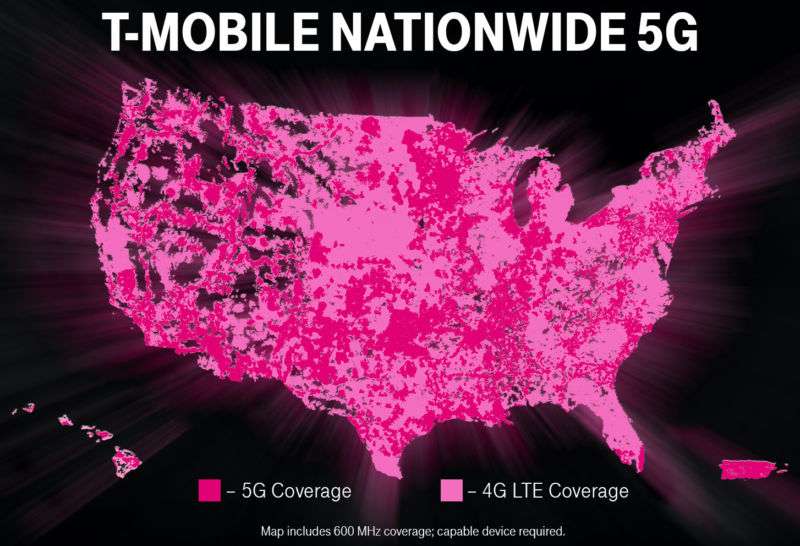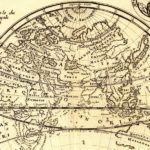
T-Mobile touts “nationwide 5G” that fails to cover 130 million Americans

T-Mobile today announced that it has launched “America’s first nationwide 5G network,” but T-Mobile’s definition of “nationwide” doesn’t include about 40% of the US population.
“America gets its first nationwide 5G network today, covering more than 200 million people and more than 1 million square miles,” T-Mobile’s announcement said.
The US Census Bureau estimates the population to be more than 330 million people. T-Mobile hasn’t actually forgotten about the other 130 million people in the US, as a sentence halfway through the carrier’s press release notes that “T-Mobile’s network covers more than 60 percent of the population.” At 1 million square miles, the carrier’s 5G network also covers about 28% of the country’s 3.53 million square miles, and it’s far short of the geographical reach already provided by T-Mobile’s 4G network.
We asked T-Mobile to explain why it defines “nationwide” as “60 percent of the population.” T-Mobile did not answer that question.
T-Mobile’s 4G LTE network covers more than 325 million people.
US coverage map is mostly 4G
T-Mobile said its 5G network today reaches “more than 5,000 cities and towns all across the country,” and the company published a list of those places. There are 19,495 incorporated places in the US.
Despite its actual coverage, T-Mobile’s announcement uses the word “nationwide” to describe the current reach of its 5G network a dozen times while admitting that “coverage [is] not available in some areas.” In the coverage map provided by T-Mobile, which is at the top of this article, you can see that the 5G areas displayed in a darker shade of pink don’t include huge portions of the country covered by T-Mobile 4G. Alaska is excluded entirely.
T-Mobile CEO John Legere today posted a tweet announcing the “first nationwide 5G” network and a video in which he says that “nationwide 5G is live.” But Legere did not specify in the tweet or video that the nationwide 5G excludes 40% of the US population.
☝️First *NATIONWIDE* 5G ‼️‼️‼️‼️☝️
That’s the @TMobile way 🙌 #Nationwide5G
— John Legere (@JohnLegere) December 2, 2019
The 5G service T-Mobile announced today isn’t much faster than T-Mobile’s 4G service. That’s because the “nationwide” 5G covering 60% of the population uses the same 600MHz spectrum that T-Mobile already uses for 4G. The big speed increases on 5G are expected to come from millimeter-wave spectrum, but those higher frequencies don’t travel as far and are being used primarily in densely populated urban areas.
AT&T acknowledged last month that its 5G service on low-band spectrum offers only 4G-like speeds this year, with actual speed increases coming next year. Verizon has said that 5G on low-band spectrum will be more like “good 4G,” and T-Mobile said in April that millimeter-wave 5G “will never materially scale beyond small pockets of 5G hotspots in dense urban environments.”
Update at 3:28pm ET: T-Mobile sent us another reply after this article published, saying that “‘nationwide’ for wireless networks is defined by the National Advertising Division as covering 200 million people.” We were able to confirm this in a November 2014 National Advertising Division statement that “In general, a wireless network can claim to be nationwide or coast to coast if the provider offers service in diverse regions of the country and the network covers at least 200 million people.” The NAD’s 2014 statement said it came up with this standard 10 years previously, or in 2004—when the US population was 293.7 million instead of the current 330 million. Since the standard apparently hasn’t been updated to reflect today’s higher population, it’s now much easier for carriers to claim they are nationwide without violating the National Advertising Division standard.




